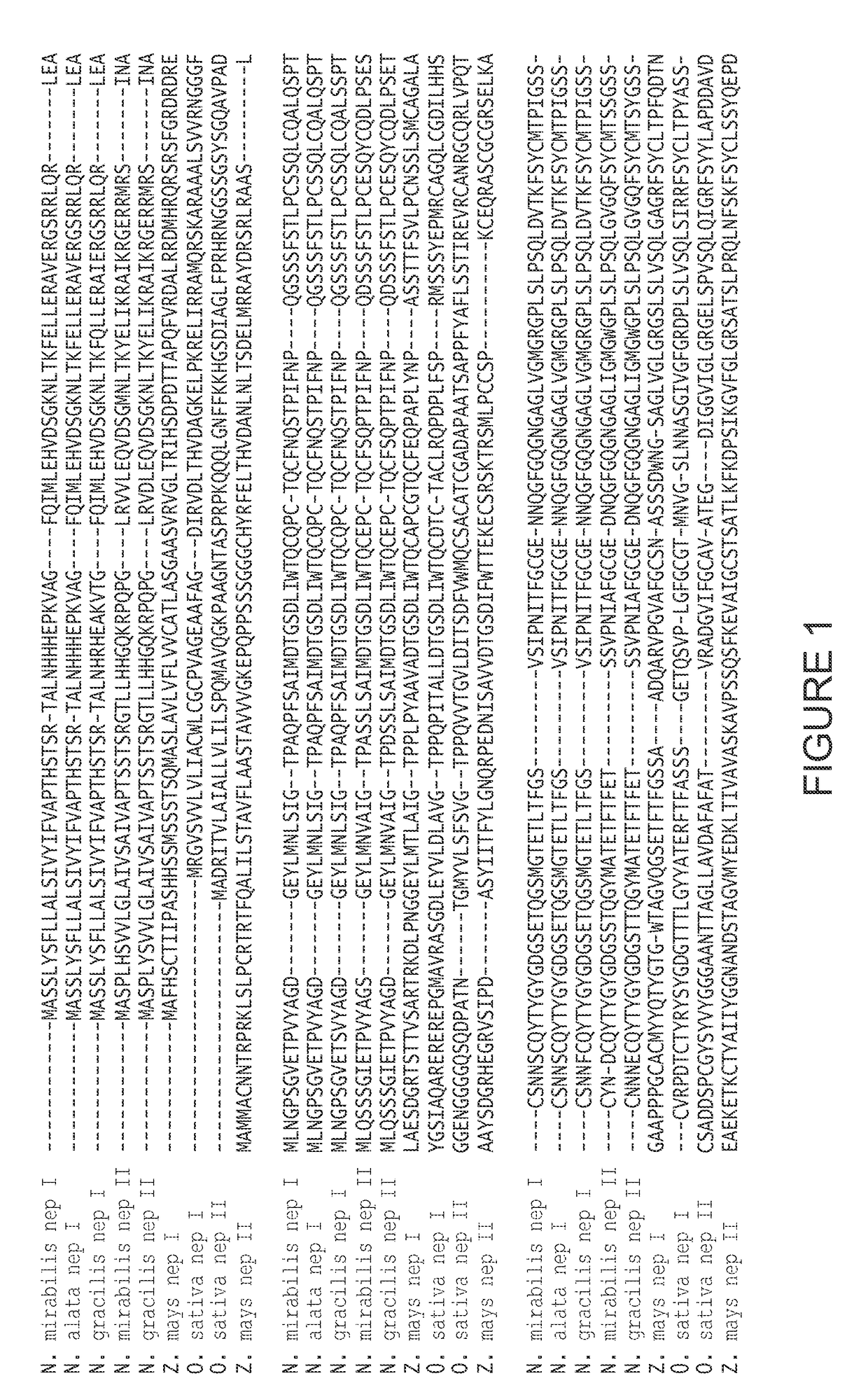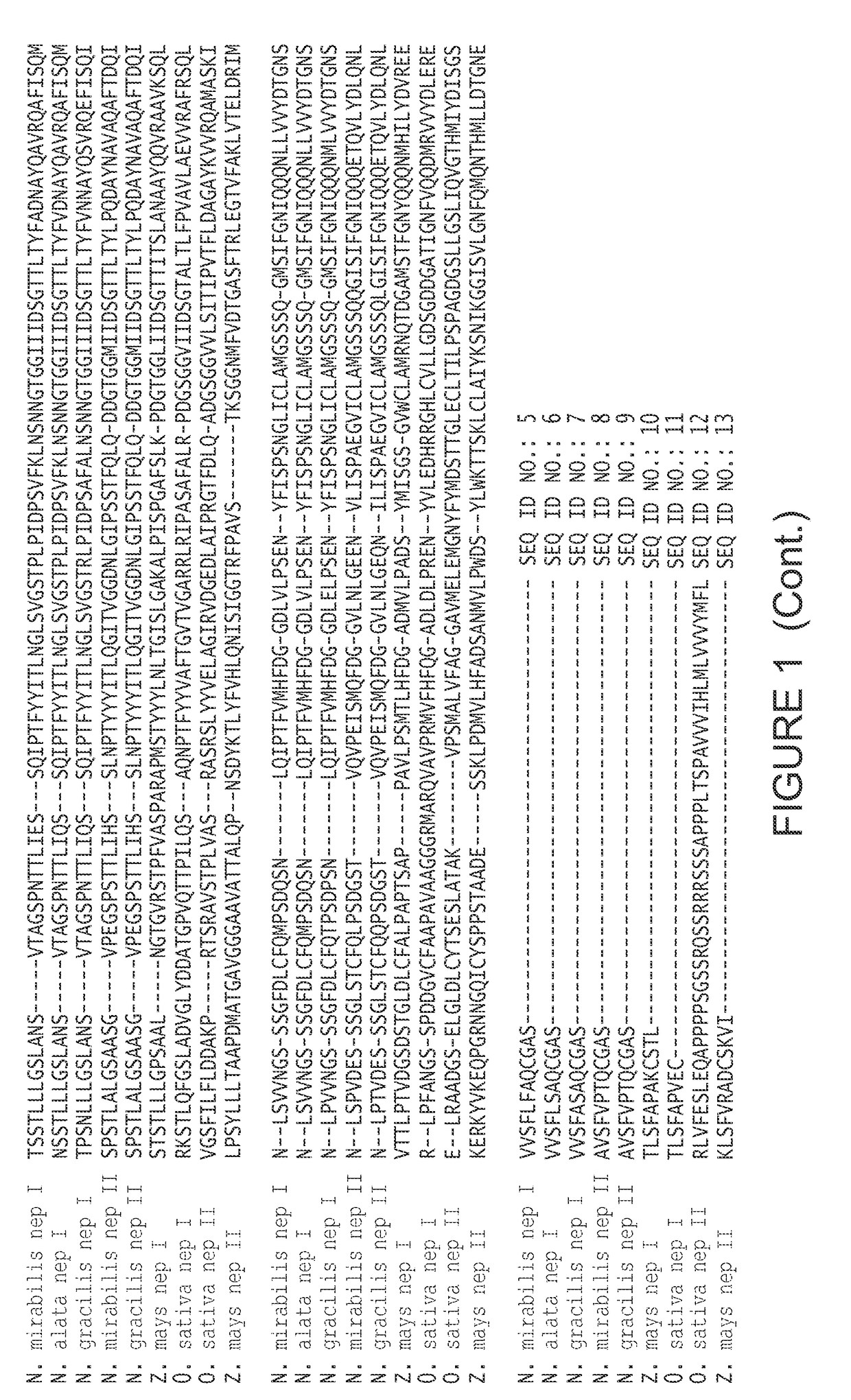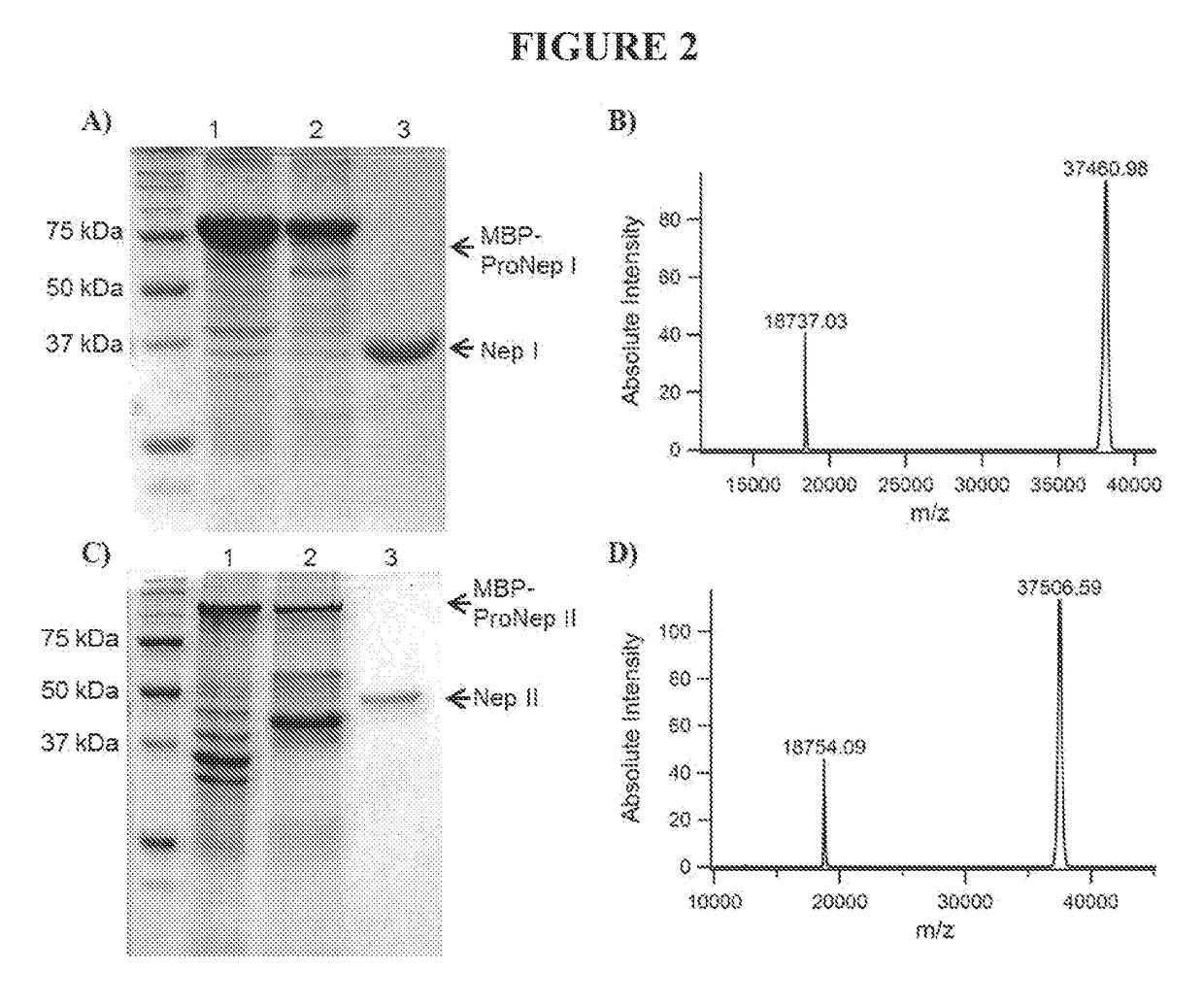Compositions and methods for treating gluten intolerance and disorders arising therefrom
a technology of gluten intolerance and disorder, applied in the field of compositions and methods for the treatment of gluten intolerance and related disorders, to achieve the effects of preventing celiac disease, improving the digestibility of a protein, and improving the absorption of protein in the intestin
- Summary
- Abstract
- Description
- Claims
- Application Information
AI Technical Summary
Benefits of technology
Problems solved by technology
Method used
Image
Examples
example 1
in Extract Preparation
Chemicals
[0195]Water and acetonitrile, HPLC grade form Burdick and Jackson, were purchased from VWR. Formic acid, Tris, and glycine were purchased from Sigma Aldrich.
Plant Culture
[0196]Transplants of Nepenthes rafflesiana, Nepenthes ampularia, Nepenthes mirabilis, and Nepenthes globosa were purchased from Keehns Carnivores (www.keehnscarnivores.ca). These were potted with wood bark, perlite, peat moss and humus (40, 35, 10, 5% respectively). Growth conditions involved 14 hours of light per day, 80% humidity and temperature in the 23° C. to 28° C. range with 2 to 3 waterings a week. Upon pitcher maturity, plants were fed with one or two Drosophila per pitcher and the pitcher fluid harvested one week later. Pitchers and their secretions were left to recover for one week prior to a second round of feeding and extraction.
Extract Preparation
[0197]Pitcher fluid was collected from all four species of plants and combined. The crude pitcher fluid was first clarified thr...
example 2
in Extract Purification
Purification of Extract
[0200]Sepharose-immobilized pepstatin in a 50×2 cm ID column was equilibrated in 20 mM Glycine-HCl, pH 2.5-3. The filtered pitcher fluid (prepared as described in Example 1) was cycled twice through the column, and the column washed with 100 mL equilibration buffer (20 mM glycine HCl, pH 2.5). The column was eluted with 100 mM ammonium bicarbonate pH 8.7 and fractions collected. In order to preserve maximum the enzyme activity, the pH was decreased to 4 right after fraction collection with 2 M glycine HCl, pH 2.5. Activity was verified using a digestion assay, and the most active fractions combined and concentrated to approximately 80×, based on original fluid volume.
[0201]The only endoproteases found at detectable levels in the Nepenthes fluid and / or extract are aspartic proteases and prolyl endoprotease.
example 3
nt Nepenthesin I
[0202]The gene for nepenthesin I (SEQ ID NO: 4; encoding amino acid residues 20-413, from N. gracilis, without the plant signal sequence) was prepared from nepenthesin I cDNA, and placed between NdeI and HindIII restriction sites. This sequence was cloned into pET21a, using T4 DNA ligase (1 U) (New England Bio, NEB), T4 DNA ligase buffer (NEB), ATP (0.5 mM) (NEB), 0.5 μg pET21a vector and 2 μg of the nepenthesin I cDNA. This was incubated at 18° C. for 4 hours. The ligation mixture (5 μL) was added to 200 μL of NovaBlue competent cells and incubated on ice for 15 minutes. Cells were transformed by heat shock (45 seconds at 42° C., then immediately on ice, with 1 ml of LB medium) and incubated for 1 hour at 37° C., and plated with antibiotics (tetracycline and ampicillin). After confirming gene presence in several white colonies, a representative colony was chosen for maxiprep. The resulting recombinant plasmid pET21a / R.NepI was transformed into E. coli C41 by heat-sh...
PUM
| Property | Measurement | Unit |
|---|---|---|
| pH | aaaaa | aaaaa |
| pH | aaaaa | aaaaa |
| pH | aaaaa | aaaaa |
Abstract
Description
Claims
Application Information
 Login to View More
Login to View More - R&D
- Intellectual Property
- Life Sciences
- Materials
- Tech Scout
- Unparalleled Data Quality
- Higher Quality Content
- 60% Fewer Hallucinations
Browse by: Latest US Patents, China's latest patents, Technical Efficacy Thesaurus, Application Domain, Technology Topic, Popular Technical Reports.
© 2025 PatSnap. All rights reserved.Legal|Privacy policy|Modern Slavery Act Transparency Statement|Sitemap|About US| Contact US: help@patsnap.com



